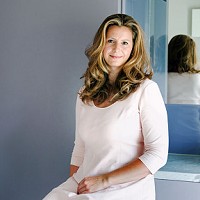
Understanding The Rolf Method of Structural Integration in 7 steps
Posted by Anna Collins Over 1 Year Ago
On The Rolf Method
Tired of niggling aches and pains that won’t go away? Do you feel that you’re not moving as brilliantly as you used to? Have you lost your shine and inner sparkle? Time for an overhaul; time to try ‘Rolfing’.
What is it?
The Rolf Method of Structural Integration, to use its full name, is a manual therapy founded by Dr Ida Rolf in the mid 20thcentury in the USA. It’s a series of ten unique and cumulative sessions, which aim to get your body in the best alignment possible, allowing energy (and gravity is the one form we can never escape from) to flow through more freely.
Why does this matter?
Once we are better aligned, life becomes much easier. People notice shifts fairly quickly, often in the first session. By releasing the stresses and strains within the body, the whole structure can function more efficiently.
What can be expected?
Results vary from person to person, as we have our own set of bumps and bruises, trauma history, and genetics. The list of benefits can include, but is not limited to: easier breathing, better posture, appearing slimmer, having a greater range of movement, performing better in your sport/activity, having more flexibility and co-ordination, feeling lighter and looser, having a sense of being more grounded, being able to sit or stand for longer periods of time without fidgeting, improving self-confidence, coping better, having more energy, as well as reducing or eliminating chronic aches and pains.
Whilst this is primarily a physical therapy, people often notice changes in their mental, spiritual and emotional well-being. Traumas of any kind get stored in your body (cell memory), so these may well come to the surface to be released as well. If you have issues in your tissues, sign up to get them sorted out!
How does this magic happen?
The intention is to work with the body’s fascia, which is a network of connective tissue wrapping every internal part you’ve heard of (bones, tendons, ligaments, organs, etc). Not only does it surround them, it penetrates them, going right down to the cellular level. It really is a fancy matrix; if one part is pulled tight, for example, then the whole web will be affected. Likewise, in treatment, if we can release a stuck bit, then the entire system can breathe a sigh of relief, as it is able to relax. Dr Rolf called fascia ‘the organ of posture’. She knew how important it was, despite very little knowledge of it at the time within the medical community.
Why ten sessions?
Dr Rolf designed her work to be done over a series of ten sessions, with each building upon the last. By working over the whole body, we can effect change everywhere. Each session has a plan and a purpose to help unwind and untwist the body; bit by bit, it relaxes and allows us to sort out the next layer of strain. There is an inherent intelligent to the ten sessions, and changes last much longer than they would if we just worked solely on the ‘sore spot’, as often the source of the problem is not where you feel it.
In my practice, I tend to suggest trying the first one to see how you get on; most people are keen to at least try two more, which I like to call a mini series of three. This gives you a pretty good idea of what it entails. Once we start session 4, I ask for commitment to the rest of the process; it is an evolution, and you’ll achieve better results if you stick with it.
How often should you have them?
Dr Rolf’s ideal was to do the entire series within 6 weeks. Most clients I see in London do one a week, sometimes once a fortnight. However, if I have clients flying in to see me, we will work with the timeframe. On retreats, it is possible to do one a day, as all you have to do is relax and integrate the work (no boring chores on vacation!)
What happens afterwards?
Well, once you’ve had ‘the ten’, you should have a bit of a rest from physical bodywork to allow the changes to integrate. Then, you can have top-up sessions or mini-series as and when you feel the need for a bit of a boost.
Are the terms Rolf Method and Rolfing the same thing?
Yes and No. Both describe Dr Rolf’s work. Upon her death, one school became two. One continued to use Dr Rolf’s preferred term of Structural Integration (Rolf Method) and teach the original ‘recipe’, as she called it; the other trademarked the name Rolfing and made changes to the process. So practitioners will use one term or the other, depending on where they trained.
Anna Collins is an advanced practitioner of Structural Integration. She trained with Dr Rolf’s protégé and many of her early students in the US. She has a practice in London and travels to health retreats internationally. She is also qualified in scar work therapy, Reiki Healing, and chakra balancing. To get in touch, visit www.thepolishedonion.com




